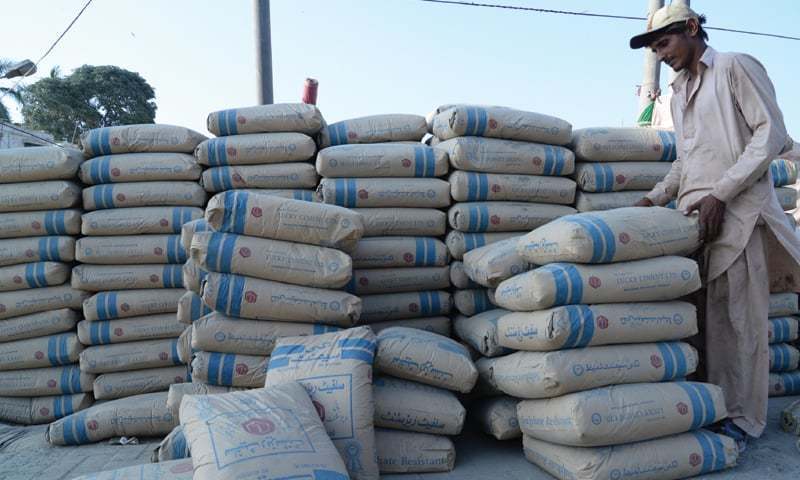KARACHI: Overall cement sales — domestic and exports — fell 5.67pc to 12.825 million tonnes during the first quarter (July-September) of this fiscal year from 13.596m tonnes in the corresponding period last year.
Amid booming construction activities, the domestic sales rose by four per cent to 11.279 million tonnes in 1QFY22 from 10.853m tonnes in the same period last fiscal year. However, exports posted a drop of 44pc to 1.546m tonnes from 2.743m tonnes.
Shipments to Afghanistan during 1QFY22 plunged by 36pc to 387,667 tonnes from 605,504 tonnes during the same period last fiscal year owing to higher freight cost making exports economically unfeasible and also because of political crisis in Afghanistan.
Exports via sea routes also fell by 26.10pc to 477,327 tonnes from 645,923 tonnes. Some of the main buyers of Pakistani cement were East and West Africa, Sri Lanka, Bangladesh and Mozambique. Pakistan is competing with Thailand, Vietnam and Indonesia on world cement markets.
Local demand remains intact on booming construction activities as exports fall by 44pc
A spokesman of All Pakistan Cement Manufacturers Association (APCMA) said that API4 Richards Bay coal FOB prices have increased from around $68 per tonne in September 2020 to over $210 per tonne in September 2021. Ocean freight from South Africa to Karachi also increased from $11 per tonne in September 2020 to $30 per tonne in September 2021. The rupee parity to US dollar increased from 165 to over 171 during the same period.
Power and energy rates have been constantly increasing followed by transportation cost due to increase in petroleum prices thus adding to the cost of delivery to different destinations. These price escalations have seriously affected the cost of doing business in local as well as international markets, he said.
He also expressed concerns about the slide in demand. He was, however, quite hopeful that the cement industry will regain its growth momentum in the coming months mainly due to government policies related to the construction sector.
North-based mills dispatched 9.483m tonnes cement domestically during 1QFY22, up 0.22pc from 9.463m tonnes in 1QFY21. Exports declined by 38pc to 387,667 tonnes compared with 622,186 tonnes.
Domestic sales by South-based mills registered a healthy rise of 29.15pc to 1.795m tonnes from 1.39m tonnes in the same period last year. However, exports plunged by 45.38pc to 1.158m tonnes from 2.12m tonnes.
Monthly data showed that in September cement dispatches declined by 12.17pc to 4.589m tonnes as against 5.225m tonnes in September 2020.
Local cement sales in September down 2pc to 4.018m from 4.095m tonnes in September 2020. Similarly, exports plunged 49.45pc to 0.572m tonnes in September from 1.131m tonnes in September 2020.
North-based mills sold 3.451m tonnes of cement in domestic markets showing a drop of 2.04pc from 3.523m tonnes in September 2020.
Local sales by South-based mills also eased to 567,445 tonnes from 571,639 tonnes in September 2020.
Exports from North-based mills tumbled 61.63pc to 110,245 tonnes against 287,287 tonnes in September 2020. South-based mills exports also decreased by 45.29pc to 461,340 tonnes from 843,334 tonnes in September 2020.
Mehroz Khan at Topline Securities attributed rising international coal prices to resumption in global economic activities post the Covid-19 related lockdowns, higher energy demand and supply shocks.
As per a recent Bloomberg article, China, the world’s top coal consumer, is in dire need of more supply and is willing to pay any price. With winters on the way for much of the world and natural gas prices at record levels, economies across the globe are competing for a finite supply of coal. These reasons suggest that break-down in coal prices is unlikely in the near-term, he said, adding the cement manufacturers have recently increased cement prices by Rs25 per 50 bag to partially pass on the impact of rising costs.
Published in Dawn, October 5th, 2021














































Dear visitor, the comments section is undergoing an overhaul and will return soon.